Jolly Mon
Hero Member
- Joined
- Sep 3, 2012
- Messages
- 868
- Reaction score
- 631
- Golden Thread
- 0
- Primary Interest:
- All Treasure Hunting
- #1
Thread Owner
Got out for a little zero visibility work with the Aquapulse today.
The sheathing fragments are definitely lead...which leads me to believe they may be from a very early vessel...before 1690?? I could be wrong on this...experts please chime in...
The object that looks like a chunk of wood is the real stumper, though.
It is very heavy for its size...when I found it I could not see it and so I thought it was just a chunk of iron.
When I got back into the boat at the end of the day I looked at it...and thought sure it was a chunk of fossilized bone...not uncommon in the area it was found. I turned back on the detector and sure enough, the Aquapulse picked it up, though not nearly as strongly as it would a normal iron object of its size. I started looking a little closer and now I am thinking it is possibly some sort of wood that has petrified or mineralized in some way so as to be detectable. Let me state clearly: this thing is hard as a rock. I tested it with my Xterra 70 and it reads a dead -8...in other words, pretty much pure iron. But it is completely non-magnetic !!
I know that fossils can be formed by minerals gradually replacing organic matter over time, but I have never heard of a piece of wood or bone (I am still not sure which) becoming fossilized and replaced by iron. Has anyone heard of such a thing?
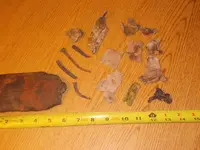
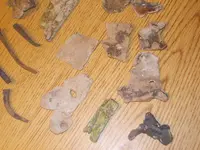
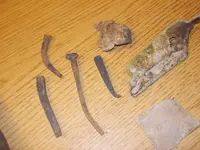
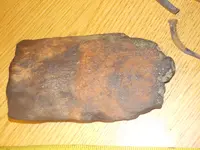
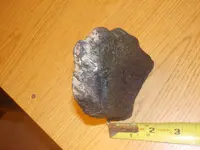
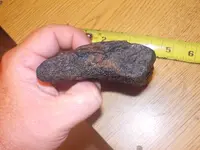
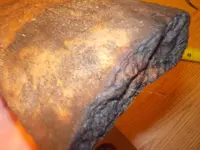
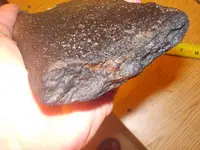
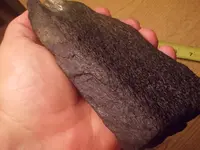
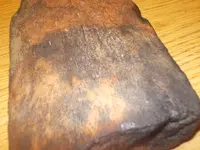
The sheathing fragments are definitely lead...which leads me to believe they may be from a very early vessel...before 1690?? I could be wrong on this...experts please chime in...
The object that looks like a chunk of wood is the real stumper, though.
It is very heavy for its size...when I found it I could not see it and so I thought it was just a chunk of iron.
When I got back into the boat at the end of the day I looked at it...and thought sure it was a chunk of fossilized bone...not uncommon in the area it was found. I turned back on the detector and sure enough, the Aquapulse picked it up, though not nearly as strongly as it would a normal iron object of its size. I started looking a little closer and now I am thinking it is possibly some sort of wood that has petrified or mineralized in some way so as to be detectable. Let me state clearly: this thing is hard as a rock. I tested it with my Xterra 70 and it reads a dead -8...in other words, pretty much pure iron. But it is completely non-magnetic !!
I know that fossils can be formed by minerals gradually replacing organic matter over time, but I have never heard of a piece of wood or bone (I am still not sure which) becoming fossilized and replaced by iron. Has anyone heard of such a thing?










Amazon Forum Fav 👍
Last edited:





